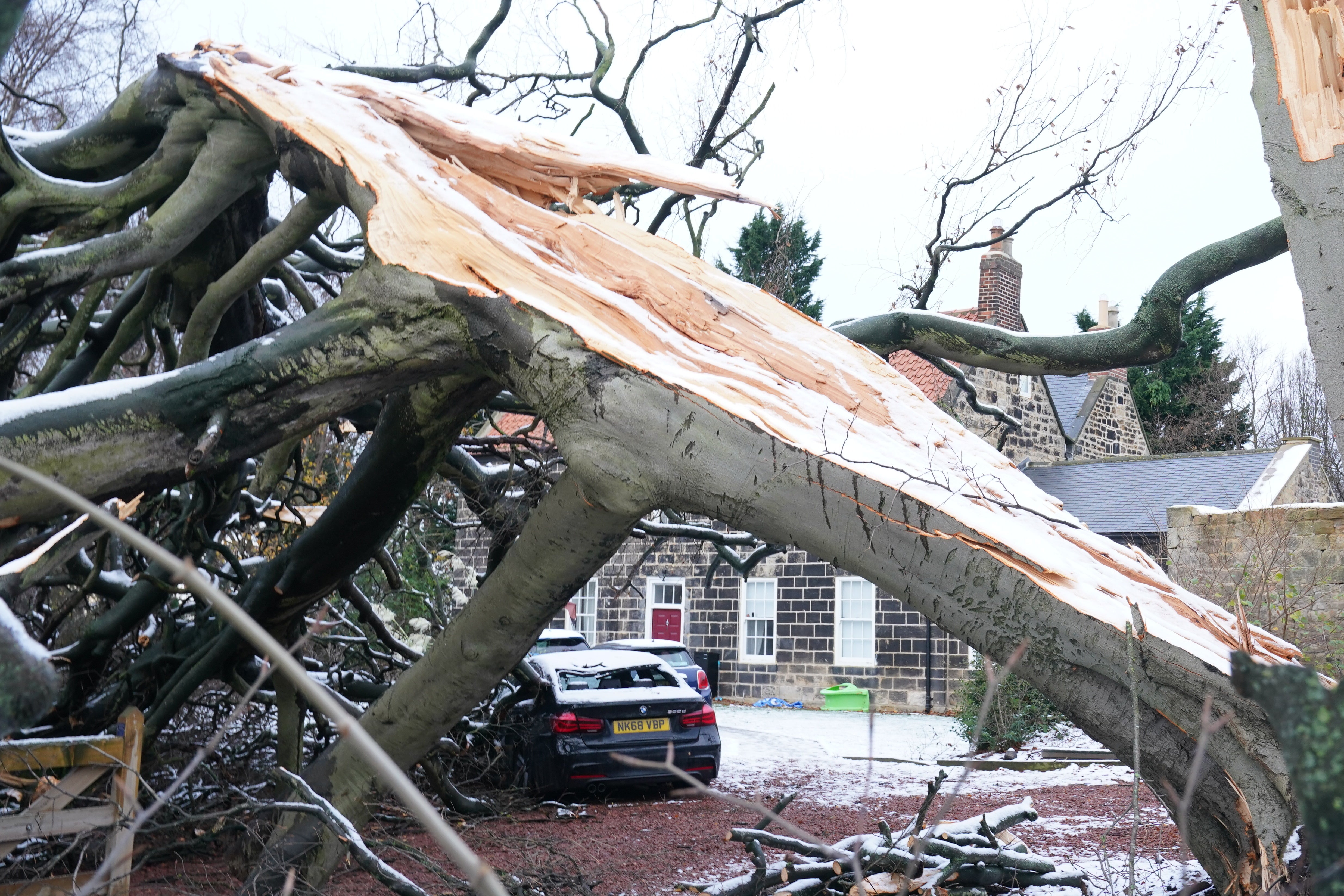Storm Arwen power cuts ‘made worse by wind from unusual direction’
Paul McGimpsey, from the Energy Networks Association, said trees fell differently because the wind had come from the north-east.

Your support helps us to tell the story
From reproductive rights to climate change to Big Tech, The Independent is on the ground when the story is developing. Whether it's investigating the financials of Elon Musk's pro-Trump PAC or producing our latest documentary, 'The A Word', which shines a light on the American women fighting for reproductive rights, we know how important it is to parse out the facts from the messaging.
At such a critical moment in US history, we need reporters on the ground. Your donation allows us to keep sending journalists to speak to both sides of the story.
The Independent is trusted by Americans across the entire political spectrum. And unlike many other quality news outlets, we choose not to lock Americans out of our reporting and analysis with paywalls. We believe quality journalism should be available to everyone, paid for by those who can afford it.
Your support makes all the difference.Recent power cuts during Storm Arwen were partly exacerbated by the wind hitting from the wrong direction, a representative of the trade body for energy networks has said.
Paul McGimpsey, director of regulation at the Energy Networks Association, said trees fell differently because the wind had come from the north-east.
He was citing a Met Office report which said that northerly winds likely led to more trees falling.
Storm Arwen ripped through communities on November 26, leaving around 240,000 homes without power. Around 1,000 were still without electricity on Monday.
This storm has caused particular issues, and the wind direction was one of those
Mr McGimpsey told MPs on the Business, Energy and Industrial Strategy Committee: “Over the last five years we have spent £730 million on resilience across our networks, focusing on flood defences, cutting down trees, etc.
“I think one of the particular issues that we have faced with this storm, which has been different to what we’ve faced in the past… the wind direction coming from the north-east is not the prevailing winds you would expect from the south and as such, in many occasions, trees would fall differently on to the lines.”
Pushed on whether networks only plan for winds coming from just one direction, he said this is not the case.
“I’m not saying that, I’m just saying that this storm has caused particular issues, and the wind direction was one of those,” Mr McGimpsey said.
“Considerable work has been done on the network to reinforce and upgrade. But there were particulars of this storm which did cause issues which are causing the problems that we can see.”
Power cuts were caused by a mixture of high wind speeds, debris hitting lines, snow and trees blocking lines and preventing repairs, and ice on the energy lines, among other things.
There were 4,500 instances of damage across the networks, several times more than during many past major storms.
The Met Office said: “The unusual direction of the strongest winds – northerly as opposed to prevailing westerly – may have been an additional factor influencing the number of trees brought down.
“More than one million homes experienced a loss of power as falling trees brought down power lines, with over 100,000 homes subsequently experiencing several days without power.”
On Monday, Prime Minister Boris Johnson said he had been reassured by the chief executive of Northern Powergrid that the 1,000 homes which are still without power will be reconnected on Tuesday at the latest.
“I also asked for assurances that the energy supply companies were putting in place measures to limit any potential further disruption to households as a result of Storm Barra ” he said.
“I am grateful for the continuing work of emergency teams and volunteers who are working tirelessly to restore power to the remaining homes and welcome Ofgem’s review into the response to Arwen.”